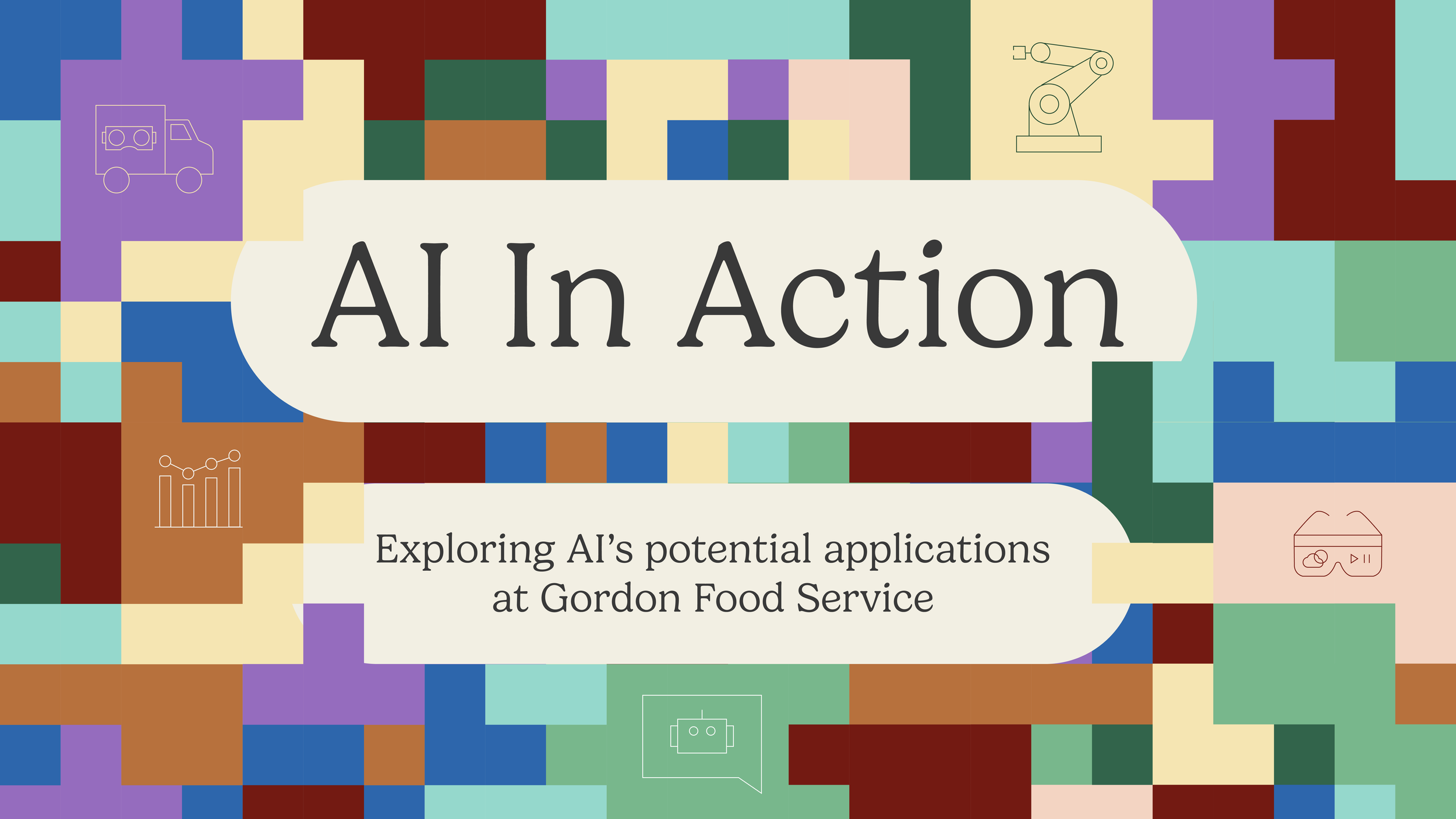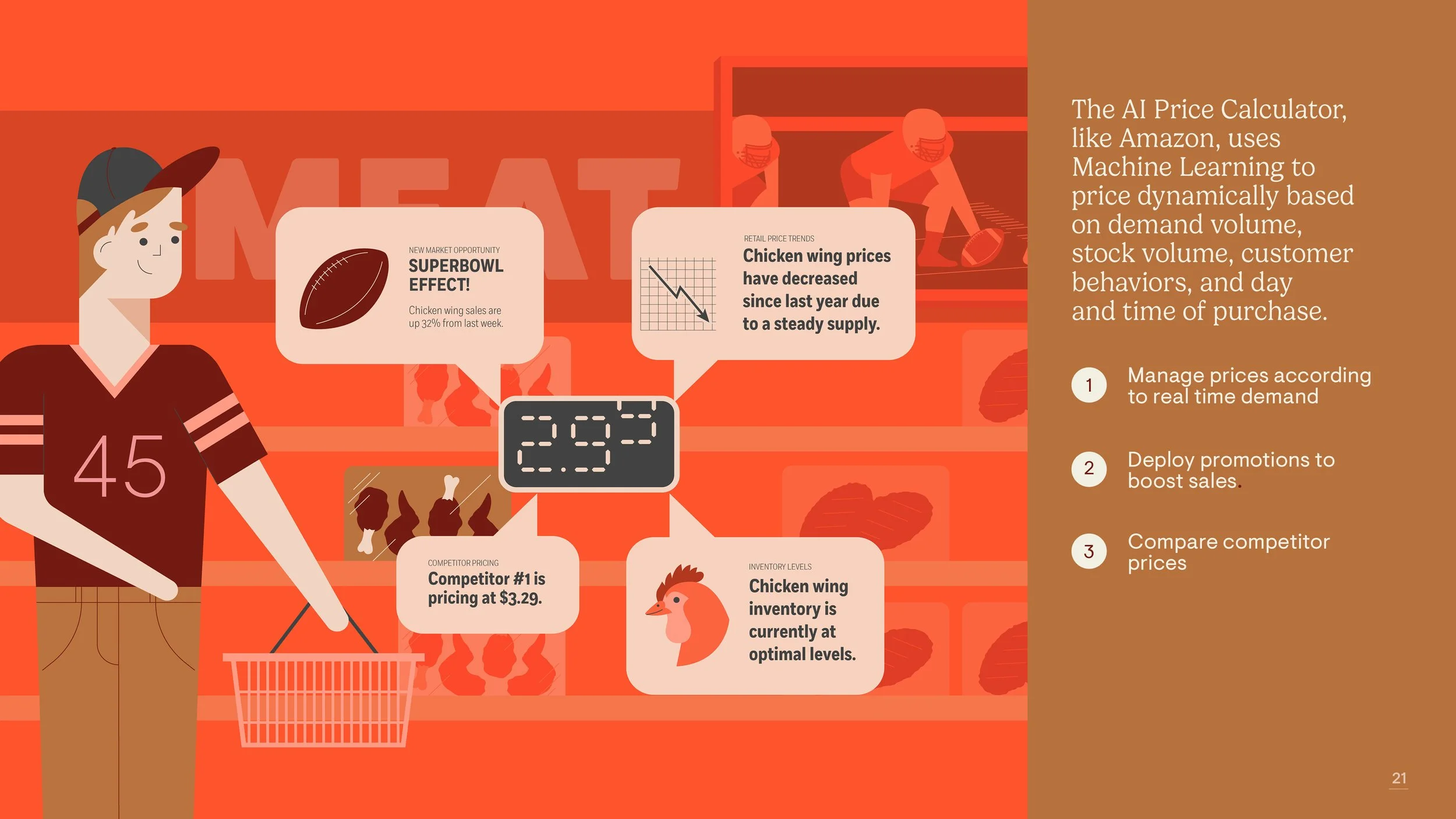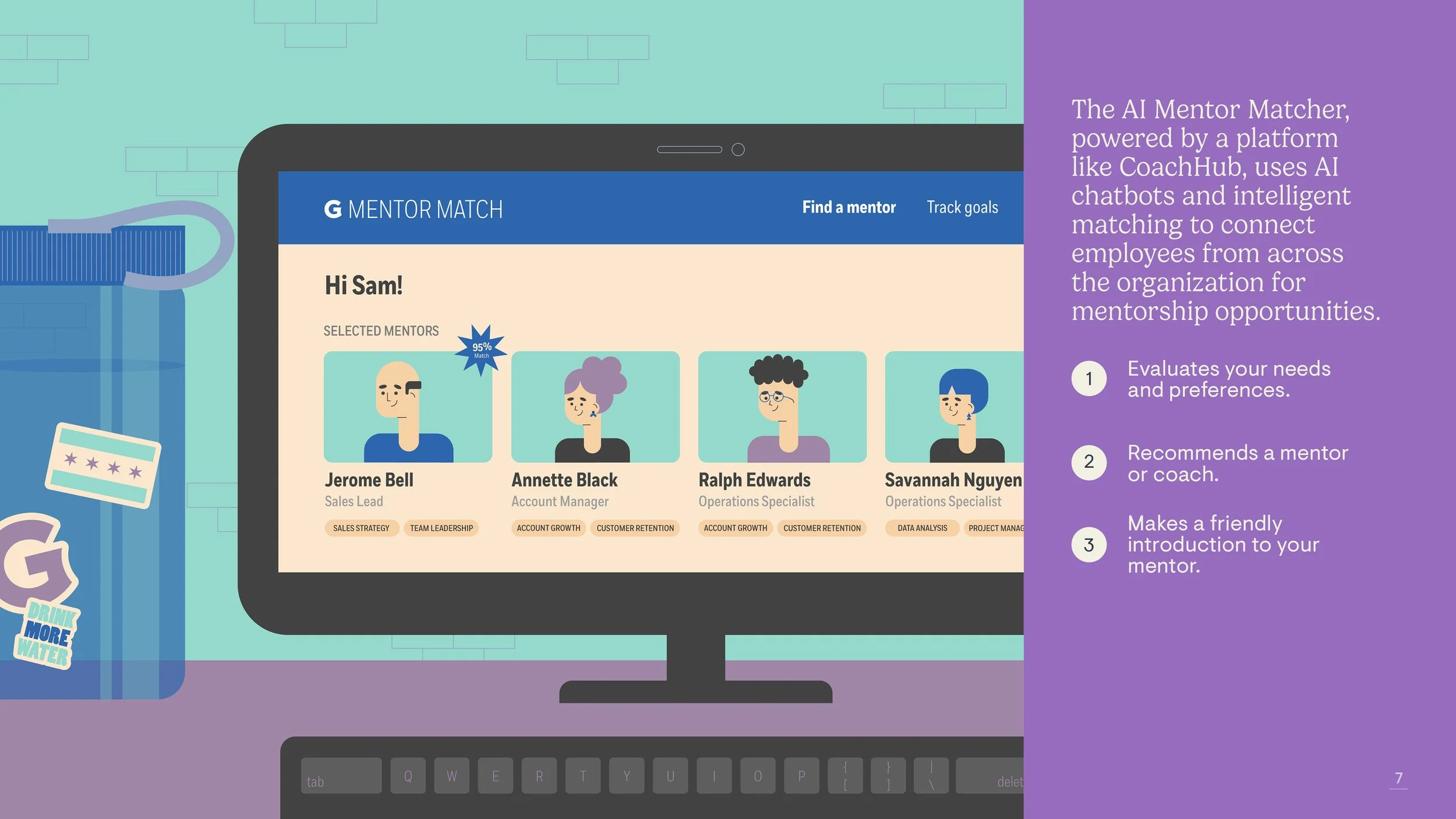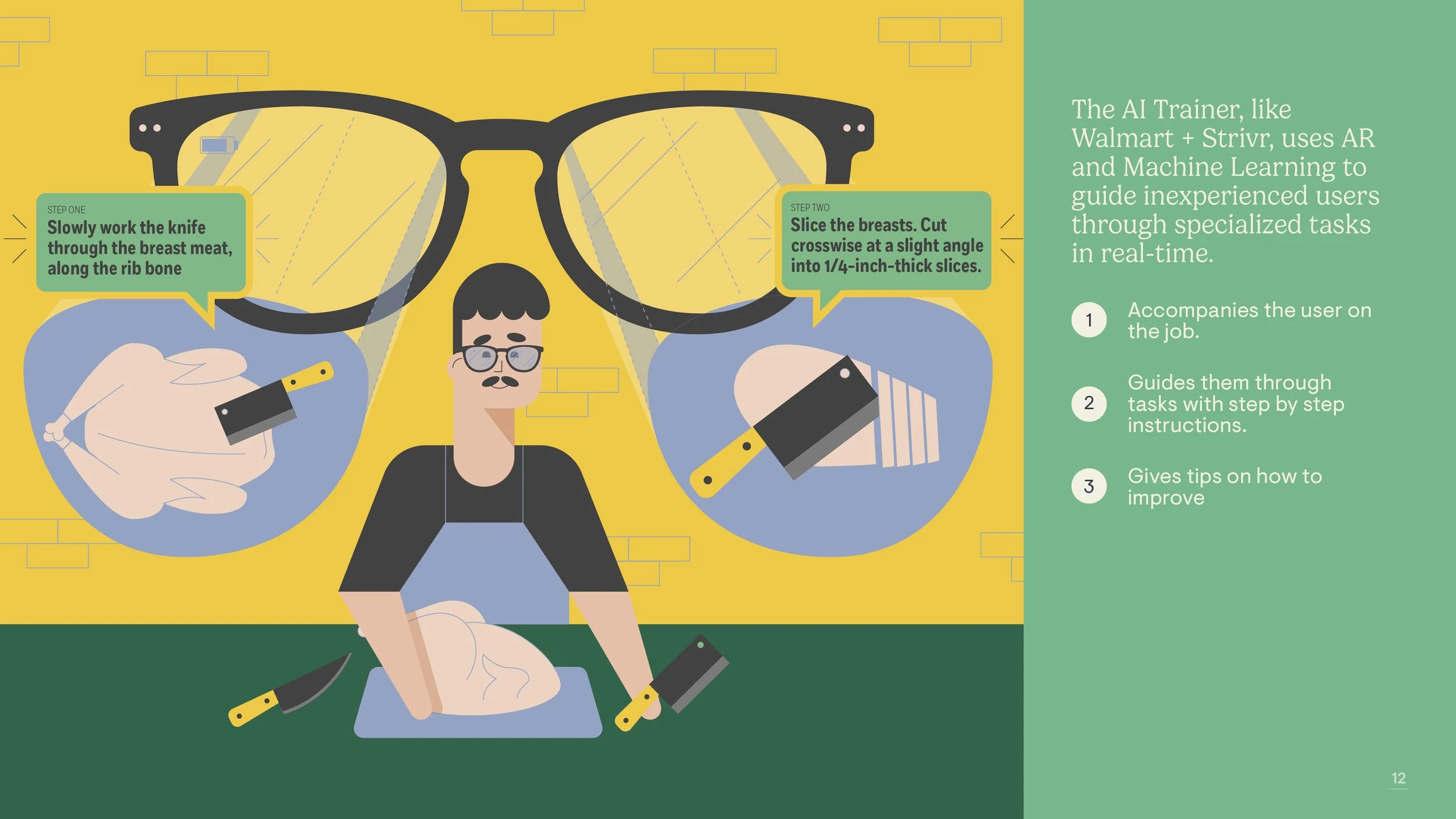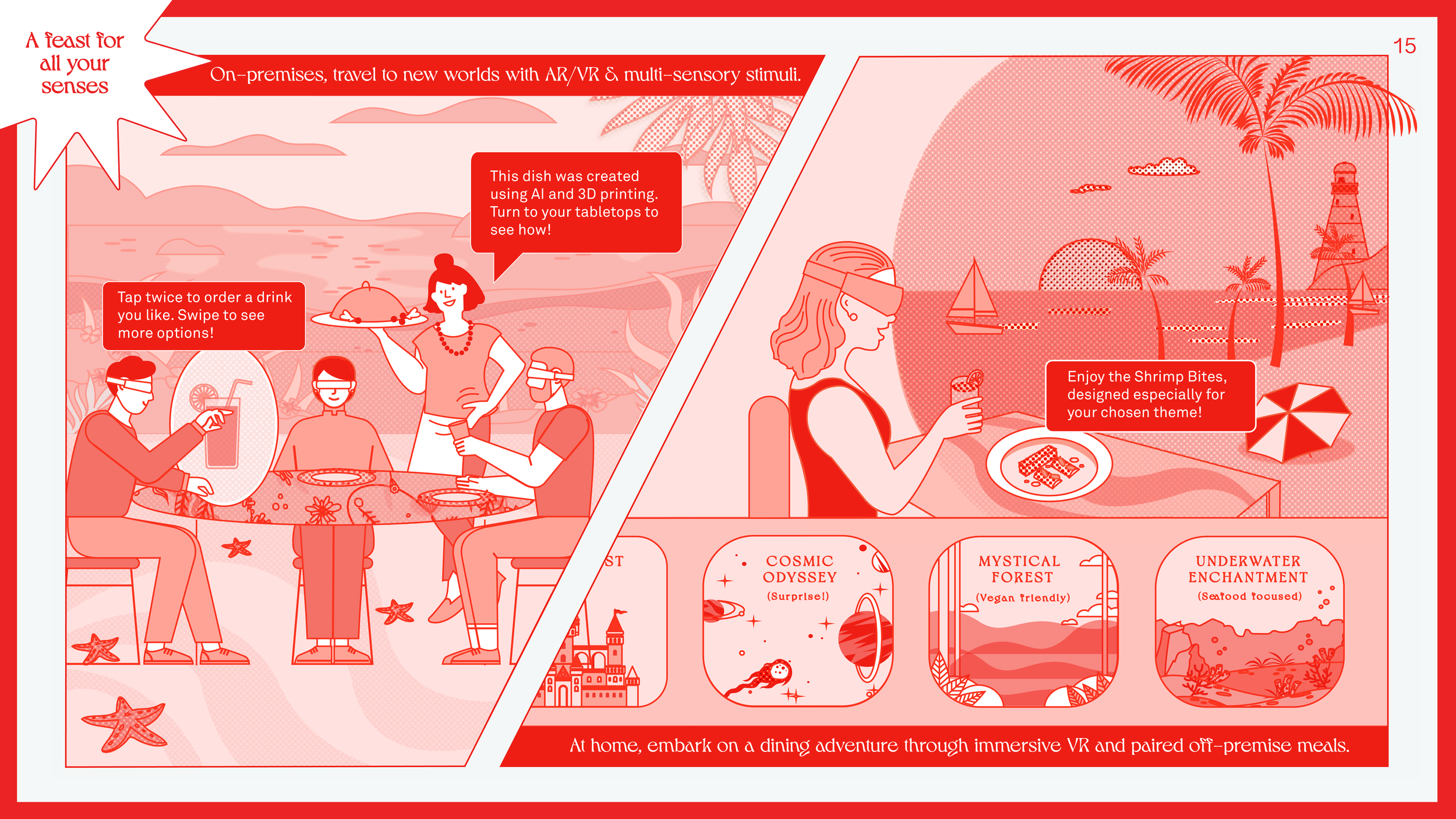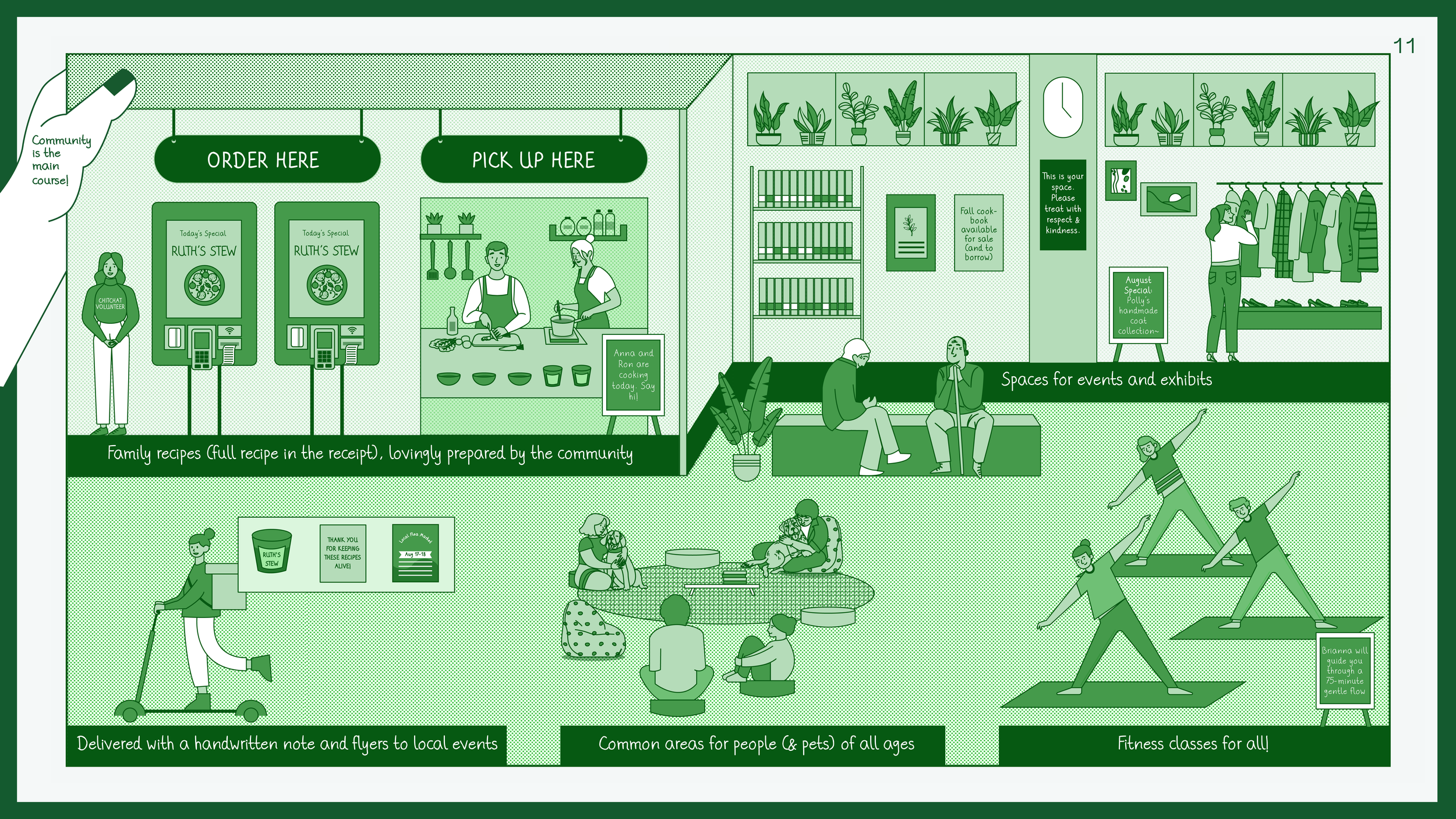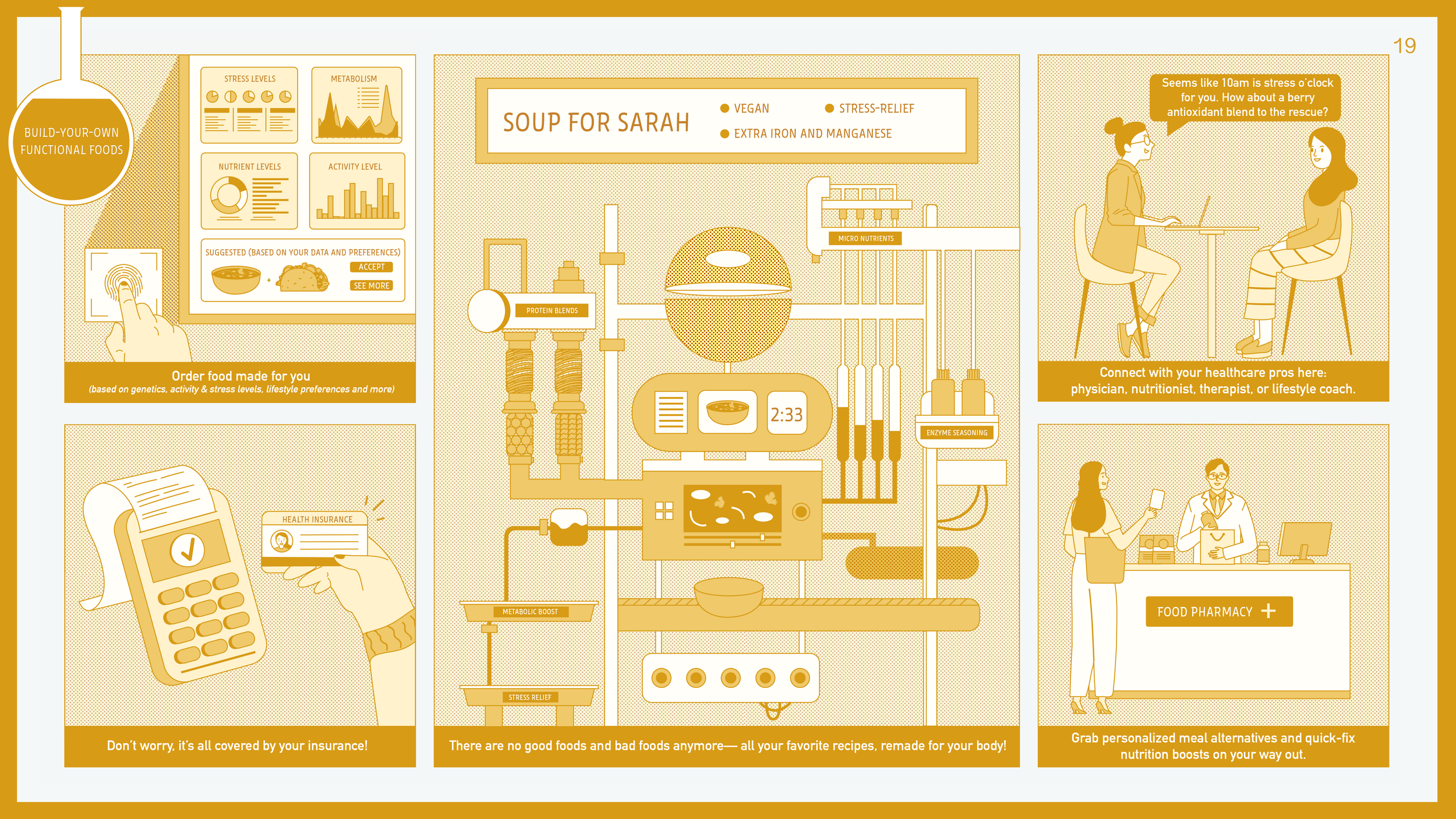Exploring the Challenges and Opportunities in foodservice
Keywords: Systems thinking, Foodservice
Tools: Miro, Microsoft Excel, Adobe Illustrator, Adobe InDesign
Client: Gordon Food Service
Role: Design research, Creative Writing,
Visual Storytelling
As a design strategist at Relish Works, an innovation hub exploring the future of the foodservice industry for Gordon Food Service—a legacy food distributor—I worked on an interdisciplinary team that included business strategists, service designers, and communication designers. We applied human-centered methods to address challenges throughout the entire food supply chain, from farm to fork. Our work ranged from tactical, point solutions—targeted fixes to specific problems—to imaginative, future-focused explorations. Each type of project demanded a unique set of skills and mindsets.
PROJECT 1
Creating a 'source of truth' document to capture the rapid changes in the food industry through a data-first approach
Throughout our discussions with company leadership, we uncovered a universal challenge: they were inundated with an overwhelming amount of data on a daily basis, making it hard for them to track the changes in the food industry.
-
During our interviews with company leadership, we discovered a common challenge: being overwhelmed by the sheer volume of data they encountered daily.
The majority of our 15-week project was dedicated to compiling and editing secondary data sources. This included government data (such as from the USDA and BLS), trusted industry publications (like NRA Reports and IBIS World), and reputable journalistic sources (including The New York Times, The Wall Street Journal, and Restaurant Dive). The aim was to create a repository of data points which, collectively, would provide the leadership with insights into the evolving dynamics of the food industry, highlighting potential challenges and opportunities.
-
Data can be subjective! I had always believed that data and numbers were objective, unshakeable, and solid. However, during this project, we encountered so many numbers—sometimes contradictory—that we had to pause and consider factors beyond the numbers themselves. Questions like who conducted the study, why it was conducted, the timing of the study, and the number of people it accounted for became important. Understanding these aspects helped me grasp that data is not just about figures but also about context, interpretation, and the intent behind its collection.
PROJECT 2
Identifying potential AI applications for a food distribution company that currently makes very limited use of technology
Our aim was to integrate AI into our parent company's operations, a legacy food distributor. We pinpointed areas where AI could make a big impact(without disrupting core operations)—hiring and training, managing inventory, forecasting demand, and optimizing delivery routes. This effort proved that even minimal tech use can greatly enhance operations and customer satisfaction, highlighting AI's role in modernizing traditional business practices.
-
Stakeholder Interviews: Our team conducted interviews with key stakeholders from leadership, operations, sales, and logistics to understand their daily workflows, identify pain points, and potential areas for improvement.
Needs Assessment: We identified potential areas for AI integration and prioritized six that promised significant long-term impact with minimal initial investment.Technology Scouting: In our search for solutions, we evaluated AI tools and technologies that matched our identified needs, with a focus on scalability, ease of integration, and minimizing operational disruption.
-
Not everything needs to be built from scratch! We discovered the power of partnerships and strategic investments in leveraging existing AI capabilities. This approach allowed us to rapidly enhance our technological infrastructure without the high costs and time investment associated with developing solutions in-house.
PROJECT 3
Re-imagining the future of dining in 2032
Imagine this: You're scrolling through TikTok, and suddenly, a sushi roll leaps off the screen. A simple tap, and it's already on its way to you. On a virtual road trip in the metaverse? A digital pop-up suggests a snack that materializes in your real-world living room. And for those mid-meeting hunger pangs? A discreet click under the table, and a fresh salad appears at your desk.
But the future of dining extends beyond the convenience of tech. At one end of the spectrum, community kitchens flourish as vibrant centers of life. These spaces hum with the energy of neighbors gathering to share recipes and tales, knitting the fabric of tradition into every bite.
On the other end, the cutting-edge realm of AI chefs revolutionizes personal dining. Data is used to craft meals that are as unique as your DNA. Imagine a kitchen where technology deciphers your nutritional profile, then uses 3-D printing to create meals that perfectly align with your health goals.
And there's more—imagine a world where choosing what to watch doesn’t consume your entire mealtime! Instead, your favorite shows are paired with dishes from partnered restaurants, turning your meal into an extension of the story.
By weaving together the threads of convenience, community, personalization, and entertainment, the dining experience of 2032 offers a rich tapestry of flavors, stories, and connections, redefining what it means to dine in a digitally connected, yet deeply human world.
-
Secondary Research: The team conducted thorough desk research to create a comprehensive perspective, covering topics such as Automation and AI, Emerging Restaurant Technologies, Future Business Models, Economic and Labor Trends, Consumer Behavior, as well as Data and Loyalty.
Expert Consultations: The team spoke with four experts in restaurant technology and innovation.
Field Trips: The team visited ten inspirational sites, including restaurants, retail outlets, and experiences, in New York City, Austin, and Chicago.
-
Firstly, I discovered the power of detail and specificity in bringing future visions to life. When we crafted our restaurant concepts, we didn't just sketch out vague ideas; we named them, meticulously designed their menus, and imagined their decor. This approach transformed abstract concepts into tangible, vivid scenarios, making the future feel more real and engaging.
Secondly, I was introduced to a fascinating concept: the futures cone. This approach broadened our view, encouraging us to consider a spectrum of potential futures rather than a single outcome. Our mindset shifted from predicting the future to exploring possibilities, infusing our project with a sense of curiosity and openness.






